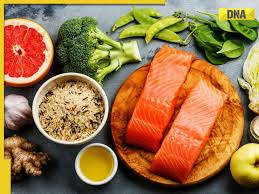When we think of Vikings, images of fierce warriors and longships come to mind. But beyond their adventurous lifestyle, their diet played a crucial role in keeping them strong and resilient. Today, that same way of eating known as the Viking diet or Nordic diet is making a comeback as people search for healthier, more sustainable food choices.
What Defined the Viking Diet Centuries Ago?
The Viking diet was shaped by harsh Nordic climates and limited resources. Food had to be filling, seasonal, and capable of supporting people through long winters. Some key staples included:
- Cold-water fish such as herring, salmon, and mackerel
- Whole grains like rye, oats, and barley
- Root vegetables including carrots, turnips, and beets
- Berries and nuts, gathered fresh from the forests
- Legumes, dairy, and small amounts of meat
In short, it was a diet based on local, natural, and nutrient-rich foods—a principle that modern nutrition strongly supports.
Why Is the Viking Diet Relevant Again?
The return of the Viking diet isn’t accidental. As people worldwide shift toward whole foods and eco-friendly eating, Nordic traditions feel both relevant and practical.
Ashlesha Joshi, senior nutritionist at Tone 30 Pilates, explains: “The Viking diet is rich in omega-3 fats, antioxidants, and fiber while being low in refined sugars. Its renewed popularity comes from the global preference for minimally processed foods that support health and sustainability.”
The Viking vs. Mediterranean Approach
The Viking diet is often compared to the Mediterranean diet, which is one of the most studied and recommended eating styles. While both prioritize natural foods, they differ in climate-based choices:
- The Mediterranean diet leans on olive oil, fresh greens, and citrus fruits.
- The Nordic diet relies more on fish, root crops, nuts, and whole grains suited for cold weather.
Both have proven cardiovascular and long-term health benefits, making them adaptable blueprints for modern nutrition.
Health Benefits Backed by Science
A Viking-inspired lifestyle isn’t just about tradition—it’s backed by research. Some of the benefits include:
- Improved heart health thanks to omega-3-rich fish and nuts
- Better digestion from fiber-heavy grains and vegetables
- Weight management with slow-digesting whole foods
- Stronger immunity supported by antioxidant-rich berries
- Eco-sustainability by focusing on seasonal and locally available produce
The Indian Context: Practical Challenges
While the Viking diet offers numerous health advantages, adapting it in India comes with challenges.
Cold-water fish like salmon are not widely available, often replaced with frozen or imported versions. The diet also emphasizes higher animal protein, whereas Indian meals traditionally focus on lentils, grains, and plant-based foods.
Joshi notes: “The Viking diet was meant for cold Nordic environments where high-fat meals were necessary. In warmer Indian climates, such heavy foods may feel less suitable. People with kidney disease or heart conditions should also watch protein and fat intake carefully.”
Making the Viking Diet Work in India
Instead of copying the Viking diet directly, Indians can adapt its principles using local foods. Some suggestions include:
- Replace rye or barley with millets and oats
- Add locally available fish like sardines, rohu, or mackerel
- Include plenty of root vegetables like beets, pumpkin, and sweet potatoes
- Add flaxseeds, walnuts, and chickpeas for omega-3 and protein alternatives
- Cut down on refined flours and processed snacks
These small but impactful swaps can bring the benefits of the Viking diet without straying too far from Indian food culture.
Why Ancient Diets Are Trending
The Viking diet is part of a broader revival of ancestral food wisdom. Unlike extreme fad diets that restrict calories or entire food groups, the Nordic approach is balanced, practical, and sustainable.
It encourages people to eat closer to nature—seasonal, local, and unprocessed foods which not only improves health but also supports environmental goals.
For many, eating like a Viking is not about mimicking history but about finding modern solutions in traditional practices.


